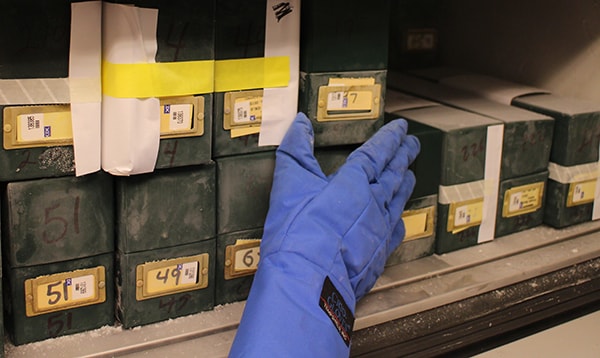Arbovirus Reference Collection (ARC) Contents and Maintenance
Contents – Now You Can Search the Collection
The comprehensive collection includes viruses from multiple families. Chimeric viruses, antigens, antibodies, and RNA controls are available for some pathogens. Search the collection.
We Need Your Specimens to Improve Public Health
We’d like to collaborate with you! You can support public health by depositing your isolates in CDC’s Arbovirus Reference Collection (ARC). The ARC offers long-term curation, maintenance, and distribution of valuable isolates. Contact the ARC staff about depositing your isolates for long-term curation, maintenance, and distribution.
- Questions about ARC? Send an email to: reagents2@cdc.gov
- Other questions? Contact CDC-INFO.
- Ready to submit an isolate? Complete the ARC Submission Form [PDF – 3 pages] and the Simple Letter Agreement [PDF – 5 pages]. Then email the form and the letter to reagents2@cdc.gov.
If you need reagents, visit our Arboviral Reagent Ordering System.
- Isolates from environmental and human sources, dating back to 1925
- Chimeric viruses
- Antibody, antigen, and RNA controls for isolates in the collection
- Hybridoma cells
Database Design
- New database released in 2017
- Relational database in Structured Query Language (SQL) to ensure data accuracy, reduce redundancy, and increase data security
- Added features include:
- Bibliography section
- Product inserts
- Increased functionality for recording quality control testing results, isolate history, and passage history and lineage during virus maintenance
- Increased functionality for order maintenance

Yale Arbovirus Research Unit collection housed at DVBD. Credit: CDC
Quality Control (QC) Testing
- Viruses
- Plaque titration to test for viability
- Inclusivity and Exclusivity testing
- Mycoplasma contamination testing
- Antigen
- Infectivity assay to confirm the material is non-infectious
- Activity testing in limited assays, if available
- Antibody
- Activity testing in limited assays, if available
- RNA
- Activity testing in specific assays
Virus Maintenance
- Track lineage
- Minimize passage number
- Perform phenotypic analysis
- Compare growth in cell types now that suckling mouse brain is not the method of choice for replication
- Obtain full genome with Next Generation Sequencing
- Analysis and identification of unknown isolates and not fully characterized viruses
- Expanded QC capabilities for historically maintained viruses